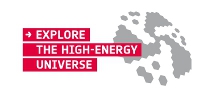Design your own high-energy astrophysics mission
 |
Take up the challenge – design your own mission
In this project you are challenged to work in a team of up to 6 people to design your own high-energy astrophysics mission. As a team you first need to decide what your mission will study by describing its science aims and objectives, and then you need to design the spacecraft. To do this you will need to research other past and present high-energy astrophysics missions and find out about what is needed to make a spacecraft fly. Your mission should also have a name and you should design a mission logo. A basic outline of what you should consider when designing your mission and its spacecraft can be found here.
Record your project – make a poster
To enter the competition you are required to present the design of your mission as a scientific poster. Your poster should be no larger than A0 in size (or equal to 8 x A4 pages) and in electronic form. In the poster you should detail the work that you have done and what you have found out (for examples of scientific posters, see this image). For instructions on submitting your poster for the competition, see Submit entry.
Judging the project
The poster will be evaluated by a panel of competition judges that includes scientists and engineers who are working on the INTEGRAL mission. It is important that the poster conveys the hard work you have done for your project. Judges will be looking at the following:
- Clearly described science aims and objectives of the mission.
- A clearly labelled diagram of the spacecraft, showing the science payload and the spacecraft systems.
- Demonstration of the team work involved, such as: how you organised the project, how you divided tasks amongst the team, how you communicated information and made decisions as a team.
- Originality of your mission
- The quality and detail included in your description of your project.
- Clarity of the information presented in the poster
- The overall quality of the poster presentation
Hints and tips
- Don’t forget to give your reasons for the choices you made throughout the design of your mission.
- You may like to consider how you could communicate your mission to others, such as other students in your school, your parents and/or local community.
- You may consider introducing the members of your mission design team. If photos are included in the poster you will be required to complete a photograph and film consent form, details of which can be found on the ‘Submit entry’ page.
- When writing up your project, remember that it is to be presented as a poster and therefore the judges must be able to see all the information clearly.
- Entries will be accepted from teams of up to 6 students only
- Posters must be written in English
- Posters should be A0 in size (or equal to 8 x A4 pages)
Check these pages regularly throughout the duration of the competition for any updates and further information.
Contact us
If you have any questions about the competition or would like to be notified of any updates, contact Rebecca Barnes at SciEdu esa.int
esa.int
